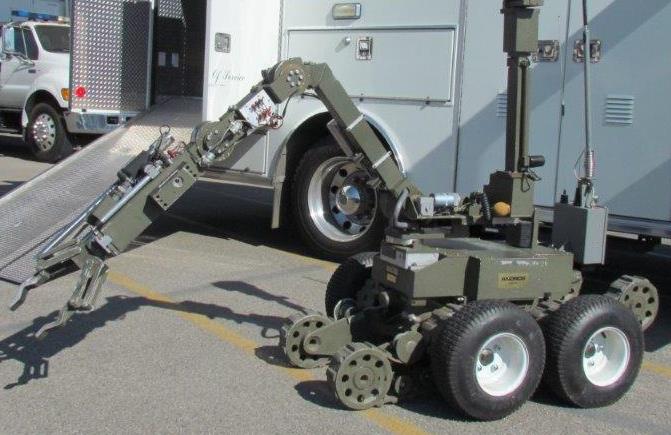
The man, Ray B. Bunge, had fled into a pitch-black open field and had barricaded himself in what authorities described as a “small dugout dirt berm with shrubs and fencing wire around him.” The previous day, the Los Angeles Sheriff’s Department (LASD) had brought in a helicopter equipped with an infrared camera overhead, and a personnel carrier was set up in front of him.
In total, there were approximately 40 deputies on scene. After several orders to surrender throughout the night, Bunge did not comply. At his feet lay a shotgun—despite his shooting spree earlier in the day, he hadn’t fired a single shot toward law enforcement.
By around 5:30am, Capt. Jack Ewell of the LASD’s Special Enforcement Bureau (its equivalent of a SWAT team) oversaw a plan to deploy a bomb disposal robot to approach the suspect from behind and snatch his gun away. It worked.
This incident, according to the LASD’s statement issued last week, “is one, of very few known, where a remotely operated robot was used to successfully disarm a gunman.”
The LASD used one of its $300,000 Andros robots—the agency has two others in its inventory. A similar robot was used as a weapon in July 2016 to attack and kill Micah Johnson, the shooter who targeted law enforcement in Dallas.

A slew of charges
But that night in Lancaster, as Ewell told Ars, while Bunge was focused entirely on the deputies in front of him and overhead, he didn’t notice as the robot approached him quietly from 25 yards away.
“[Our team] said, ‘Hey let's use the robot to get close to see what the person is doing, and while we're distracting him, let's grab the gun and get it out of there and de-escalate the situation,” Ewell told Ars. “And that's what ended up happening—it’s the first time we've ever tried to disarm somebody.”
The law enforcement veteran said it took just a “few minutes” for the robot to extend its claw arm, reach over the low fence, pick up the shotgun by the barrel, and then return back to its operator. With the gun out of the way, the LASD sent the robot back to pull the wire fencing down.
“At that point, the gunman put his hands in the air and stood up and surrendered,” Ewell said. “The robot just completely solved that problem safely.”
Bunge was charged with attempted murder, criminal threats, assault with a deadly weapon, robbery, and felony vandalism, among other crimes.
Sid Heal, a retired commander at the Los Angeles Sheriff’s Department who is now the president of the California Association of Tactical Officers, told Ars that he was pleased with his former colleagues’ tactics.
“We knew that there would be novel uses for these, but this even exceeds anything I ever imagined!” he said. “The best tactics not only leave your adversary defeated but confused.”
reader comments
91